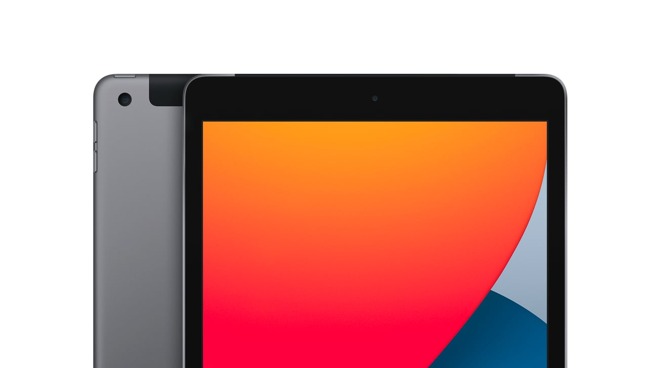Future iPhones and cellular iPads may have new technology to hide the antenna gap in the case, ranging from strategic use of different materials, to something as simple as a thin dye layer mimicking the case material.

The iPad has a section cut out of the enclosure construction for cellular models.
One of the design issues of iPhones and iPads is to produce a version that can effectively handle electromagnetic waves, signals created and received by antennas inside the mobile devices. Making it possible for the antenna to do its job means either using materials in ways to prevent the blocking of a signal, or for there to be some opening through the enclosure to the outside world.
Designing to accommodate antennas is difficult, especially when you consider how Apple designs and constructs its products. In the case of iPads, the rear section of the enclosure is a single piece of metal, which neither offers passage through a hole or a gap, nor in the use of materials that minimize effects to the antenna's signal.
One way to fix the problem is to use a two-part casing, introducing a gap around the antennas to allow the signal to pass through. However such concepts can introduce other design problems, such as eliminating the appearance of a single seamless enclosure, and weakening the overall structure.
An example of this is in the evolution of Apple's iPad designs. Depending on the variant, the back casing can be made from one single piece of material, while the 2020 iPad has a noticeably different section in the top for its cellular models.
In a patent granted to Apple by the US Patent and Trademark Office on Tuesday titled "Multi-part electronic device housing having contiguous filled surface," Apple proposes it can create a casing that offers the electromagnetic benefits of a two-part enclosure, but produced in such a way as to make it seem like a single part.
Apple's housing idea involves three elements, namely the majority of the main housing with a void section to be filled, a second housing part to fill the section, and ink. In short, Apple suggests that an ink layer could be deposited at the point of the join to cover it from view completely.
The patent largely covers using inks to hide the join of two-part casings.
While the main housing can continue to be made from metal, the secondary section could be a nonconductive component that doesn't hamper electromagnetic waves, such as a dense plastic. The second enclosure part could potentially be made from multiple layers, including an outer layer selected for cosmetic or structural purposes.
Another variation is to have an extra insert that can fit between the main and secondary enclosure parts. Coupled on the inside between the two elements, the insert could maintain the presence of a gap while keeping the two sections together, and could be made from a material that is more permissive of radio transmissions.
Regardless of the construction, Apple suggests the use of two layers of ink covering the joint. The use of two ink layers is to ensure that the coverage completely hides the seam.
The first ink layer is intended to fill and even out the seam between the two components, as a filler layer. Once applied and cured, and unwanted sections removed from the casing to make everything flat, a second ink layer is deposited to hide the join itself.
Two ink layers are used. One fills and levels the join, the other hides it.
Filling the gap minimizes the appearance of the join in the first place, making the appearance of the second ink layer much more seamless.
The patent was filed on March 16, 2020, and lists its inventors as Ming Kun Shi, Lindsay D. Corbet, Christopher Bruni, and Collin D. Chan.
Apple files numerous patent applications on a weekly basis, but while the existence of a patent filing indicates areas of interest for Apple's research and development efforts, they do not guarantee the idea will appear in a future product or service.
This is only one of a number of ideas Apple is coming up with to change the design of its products, both for aesthetics and for practicality. It has previously proposed an iPhone with an all-glass wrap-around display, as well as a version of the iMac made from a single sheet of glass.


